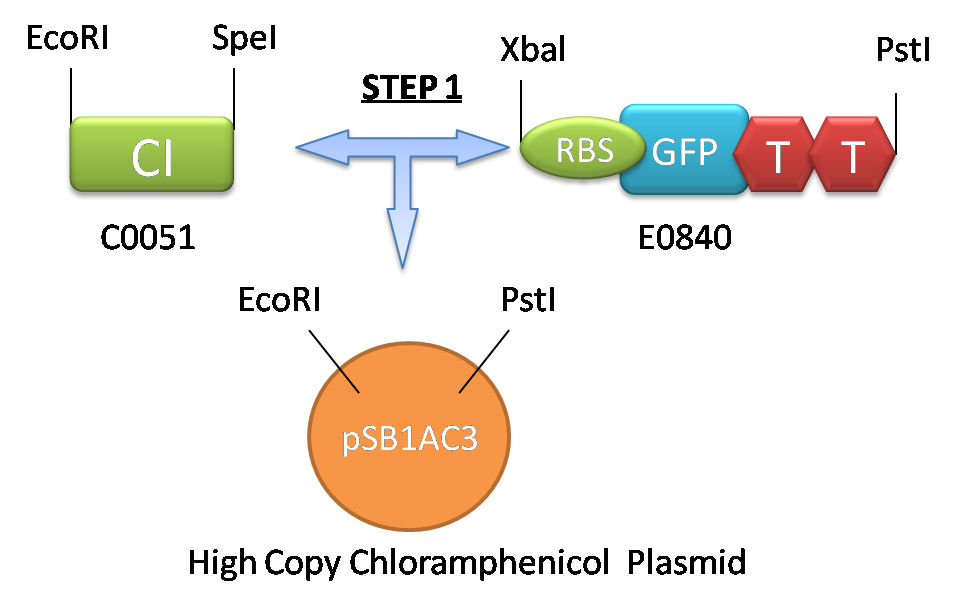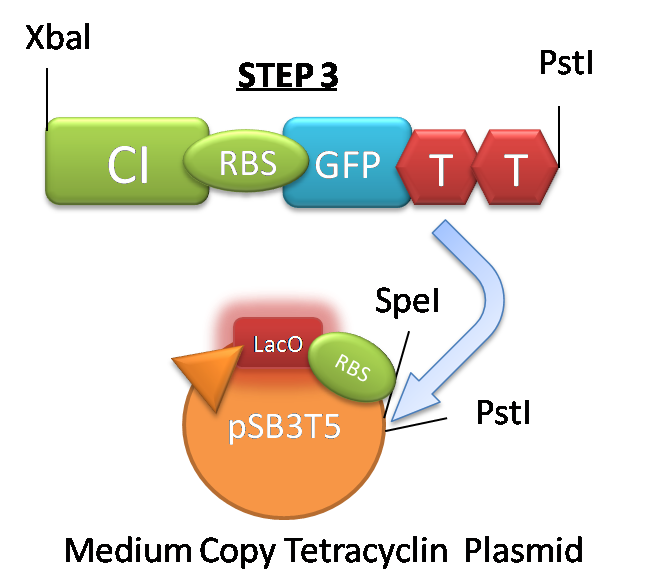Team:Aberdeen Scotland/WetLab/andgate/cloning
From 2009.igem.org
| Line 25: | Line 25: | ||
<tr> | <tr> | ||
<td> | <td> | ||
| - | <a href=" | + | <a href="https://2009.igem.org/Team:Aberdeen_Scotland/WetLab/andgate/overview"><img src="https://static.igem.org/mediawiki/2009/e/ed/Aberdeen_Left_arrow.png"> Back to AND Gate Overview</a> |
</td> | </td> | ||
<td align="right"> | <td align="right"> | ||
| - | <a href=" | + | <a href="https://2009.igem.org/Team:Aberdeen_Scotland/WetLab/andgate/results">Continue to AND Gate Results <img src="https://static.igem.org/mediawiki/2009/4/4c/Aberdeen_Right_arrow.png"></a> |
</td> | </td> | ||
</tr> | </tr> | ||
Latest revision as of 09:26, 21 August 2009
University of Aberdeen - Pico Plumber
Cloning Strategy
As our individual modules would be ideally combined at a later point, we had to make sure that our final vector would be compatible with both the quorum sensing module and LacI-Lach module, thus we settled on pSB3T5 as our final vector.
Our first step was to join CI repressor with a ribosome binding site, green fluorescence protein and the double terminator. For this step we decided to use biobricks C0051, E0840 and clone into the pSB1AC3. As CI repressor gene was upstream we digested it with EcoRI and SpeI restriction enzymes. The downstream part was digested with XbaI and PstI, therefore vector was cut with EcoRI and PstI. Our experience with plasmid digests led us to use high copy number. This initial step was the creation of biobrick
K182100
Our second step required that we first create the actual biobrick K182102 using the method of fusion PCR. The promoter K182102
was composed of biobricks I751502 and B0034. As there was no DNA for biobrick I751502 we ordered four oligonucleotides. The forward primer was composed of the pSB3T5 sequence followed by half sequence of I751502. The reverse primer was created as part of pSB3T5, B0034 and half sequence of I751502. However first PCR product was necessary to extent therefore for the next PCR we used biobrick prefix and biobrick suffix with addition of random five nucleotide at their ends. Once the biobrick K182102 was prepared we digested it with EcoRI and PstI restriction enzymes as well as vector pSB3T5.
The third and final step was to digest both existing biobricks K182100 and K182102 in the way that K182100 was just introduced into the plasmid pSB3T5 with K182102 already in. Therefore the K182100 was digested with XbaI and PstI and vector with SpeI and PstI restriction enzymes. In this step we created the final module of AND-gate and biobrick K182103.
 Back to AND Gate Overview Back to AND Gate Overview
|
Continue to AND Gate Results 
|
 "
"


